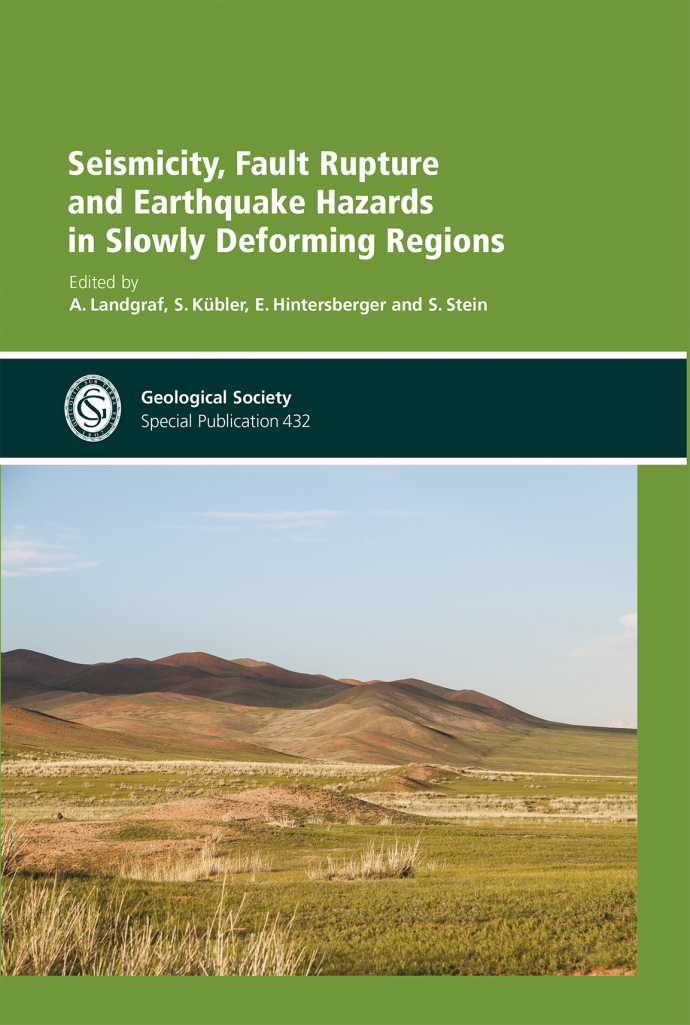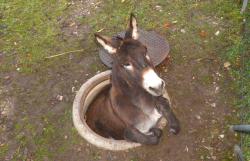Press note related to the publication of the manuscript “Earthquake crisis unveils the growth of an incipient continental fault system” in Nature Communications (DOI: 10.1038/s41467-019-11064-5).
An international team led by the Institut de Ciències del Mar (ICM-CSIC, Barcelona) demonstrate the growth of a young fault in the Alboran Sea, called the Al-Idrissi Fault System, source of the magnitude (Mw) 6.4 earthquake, which affected Al-Hoceima, Melilla and the south of the Iberian Peninsula in January 2016.
more
In a recent post on this forum, Angela Landgraf shared a digest of the long and winding road having led to the publication of Seismicity, Fault Rupture and Earthquake Hazards in Slowly Deforming Regions. Reading this post in the midst of wrapping up the edition of our Minoan Earthquakes volume, I could only sympathize with her concerns and hopes for the future of edited books at a time when impact factors and other author-level metrics all too often dictate academic choices.
Four years and a half (!) after the Out of Rubble Leuven workshop (29-30 November 2012), we are proud to announce the publication of Minoan Earthquakes: Breaking the Myth through Interdisciplinarity at Leuven University Press. Reasons for such delay are manifold but chief among them is our editorial choice of producing a coherent volume that might be used as an up-to-date toolbox for readers interested in the broader field of archaeoseismology – not just Minoan archaeoseismology – and its (necessary) relationship to other, better established, disciplines. This choice is reflected by the structure of the book and breadth of topics covered by its authors, ranging from seismology, paleoseismology, geophysics, architecture, engineering and, of course, Minoan archaeology. Although we will ultimately leave readers to judge how successful we were in this endeavor, we are encouraged by Iain Stewart’s appreciation of the volume: more
Tidal notches are a generally excepted sea-level marker. Particularly in the Mediterranean, those shoreline indicators are oftentimes used to infer coastal coseismic activity when they occur displaced from present day sea-level. Now, paleoseismologists should be able to visualize coastal evolution in order to better understand coseismic history. more
For quite some time (~7 years), I have been noticing that Holocene Dead Sea seismites frequently have a thin dark flat lying fine grained layer of sediment on top. When I finally gained access to some electron microscopes at Cambridge University in 2013, I saw that these thin layers were very fine grained. After consultation with Dust Geologist Dr. Ken Pye, I came to the conclusion that they appeared to be proximal dust deposits. It was around that time that I realized that Dead Sea earthquakes probably kicked up dust clouds that then settled atop the seismite. An example of a dust cloud kicked up by an earthquake in Mexico is featured in my crowd funding pitch video (Jerusalem Quake Seasonality on Kickstarter ) and can be seen here (Mountain front dust clouds – Mexicali Quake of 2010 ). Christoph Gruetzner, who is also intrigued by the link between seismicity and dust, has accumulated a number of videos showing “dustquakes” on his YouTube channel[1]. more

It’s a book!
Sometimes, things need time to evolve. And when they finally arrive, all laborious work and cumulated frustration is almost immediately forgotten in a flash of joy, a little bit of pride, and a lot of relief. What sounds pretty pathetic here is a summary of the process that lead to the recent Geological Society of London Special Publication 432: Seismicity, Fault Rupture and Earthquake Hazards in Slowly Deforming Regions. While we will mostly advertise the volume, which should be of broad interest to the Paleoseismicity community (so please buy it, like it, share it!), we would also like to share some thoughts about why four years passed between submission of the volume proposal at the end of 2012 to seeing the book finally in the shelf at the beginning of 2017. more
In microtidal seas such as the Mediterranean (tidal range ≈0.4 m sea-level indicators are commonly used to infer coseismic history. A list containing these indicators is long, including wave-cut platforms, marine terraces, displaced beach rock, biological agents, sedimentological and stratigraphical indicators, and archaeological indicators. Obviously, the trustworthiness varies a lot from one to another. For deriving late Holocene coastal tectonic activity, one of the most commonly used sea-level marker activity are tidal notches. These form distinct morphological and ecological erosional features developed within the tidal range [Pirazzoli, 1986; Antonioli et al., 2015]. more
Between 1885 and 1938, the northern Tien Shan at the border between present Kyrgyzstan and Kazakhstan experienced a remarkable series of five major earthquakes, exceeding M6.9 and reaching up to M ~ 8 (1885 Belovodskoe M6.9, 1887 Verny M7.3, 1889 Chilik M~8, 1911 Chon Kemin M8, and 1938 Kemino Chu M6.9). Combined, the seismic moments add up to almost moment magnitude 9, which is a significant amount of strain released in roughly 50 years and across an E-W stretch of less than 500 kilometers. Even more intriguing is the fact that the ruptured region is located more than thousand km north of the nearest plate boundary and associated India-Eurasia collision zone. The macroseismic areas of these earthquakes include the present-day capital of Kyrgyzstan, Bishkek (Frunze) and the former capital and still largest city of Kazakhstan, Almaty (earlier names Alma Ata and Verny).
more
[Update 15 February 2017: Since Sascha is an author here now, the post was attributed to him.]
Greece is one of the main targets of RWTH Aachen’s Neotectonics & Geohazards group. They worked on paleo-tsunamis, active faults on the Peloponnese, in Attica, and on Crete, and on the application of terrestrial LiDAR and shallow geophysics for active tectonics research. In their latest paper, Sascha Schneiderwind et al. developed a methodology to aid paleoseismic trenching studies. They use t-LiDAR and georadar to better and more objectively characterise lithological units. His paper includes nice examples from Crete and from the famous Kaparelli Fault. Here is his guest blog: more
The Megablock Complex: An example from the East African Rift
Recognizing and interpreting seismite horizons (soft-sediment deformation generated by earthquakes) preserved in the sedimentary record is an underappreciated approach for paleoseismic analysis. The addition of sedimentological studies to a toolkit that includes other well-established methods, such as instrumental seismic monitoring and fault trenching, can provide a less expensive and more practical option for earthquake hazard prediction and preparation in certain areas. For example, this may be a good option in less developed regions and in areas where fault trenching may not be possible. Moreover, there is a lot that we can learn rheologically from the study of seismites that could be invaluable for modeling the behavior of the surface/near-surface during seismic activity. Similarly, investigating Quaternary strata in areas that may be prone to seismicity, which may or may not have a recorded history of major earthquakes, can illuminate important information about earthquake recurrence patterns and intervals, in much the same way as fault trenching. more
“Each of us has to decide what the right balance is between being effective and being honest.”
I was thinking of this quote whilst listening to Mustapha Meghraoui’s talk during this week’s ISEMG conference in Mugla (Turkey). Mustapha was reviewing the seismic hazard potential of the northern stretch of the Dead Sea Rift, and he ended by identifying two prominent areas where there was a substantial long-term (1000 yr) slip deficit that strongly suggested heightened future earthquake potential. The quote above has nothing to do with earthquakes. Neither is it by Mustapha. Instead, it relates to global warming and was from the climate modeller and policy advocate Stephen Schneider. Nevertheless, it struck me that what Schneider was wrestling with a decade or so ago with climate change has parallels to what some earthquake geologists are wrestling with now: what do we do when we believe that the science demands action? more


